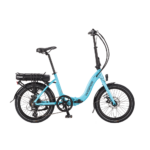I have now have got out my glasses which focus at 10cm! The heat sunk device has D152 + possibly a further digit obscured with dirt. I can try and get a photo to show the shape of the 3 pin package - it has heavy leads going into the PCB. Obviously a power device. I would have guessed that the logic circuitry would not need much current, so I am inclined to think it is part of the motor power circuitry.Mike, the 'transistor' with a heat sink is more likely to be a 5v regulator! What numbers / code are stamped on it?
Also could you check the continuity of each motor phase wire to earth? Continuity here would indicate one of the FETs has shorted.....
The 3 connections on the board have 24 KOhm to the battery negative, with one polarity of the multimeter, and over 20 MOhm with the other polarity, so I assume this indicates that the phase switching power FETs are not blown.
I have now recorded the connections for the lead going to the handlebar control as follows:
1. Pink-black
2. Black
3. Blue-black ... 0.7 Ohms to battery -ve connection
4. Lime
5. White
6. Violet
7. Brown
8. Pink
9. Green
10. Blue
11. Orange ... 3.28Kohm to battery +ve connection
When I connect the heavy power connectors to the battery (leaving the lead to the middle battery pin unconnected), the 2.5mF capacitor charges up to the battery voltage and discharges slowly over many minutes when the battery has been disconnected.
I have also checked the battery output again. With battery giving 25.2 V on the power pins, the middle pin sits at -19.2 V wrt the +ve pin (pin 1 in my notation) There are no volts measurable between the middle pin (pin 3 ) and the battery power -ve (pin4). I think that this implies that inside the battery pin 3 is connected through a diode to +6.0 V wrt pin 4, and -19.2 V wrt pin 1.
I had previously noticed that pin 3 remains exactly at 6 volts above pin 4 irrespective of the overall state of charge and therefore battery voltage. I think that this pin 3 voltage could be used to supply power to switch on the controller by means of the handle bar on/off push button.












